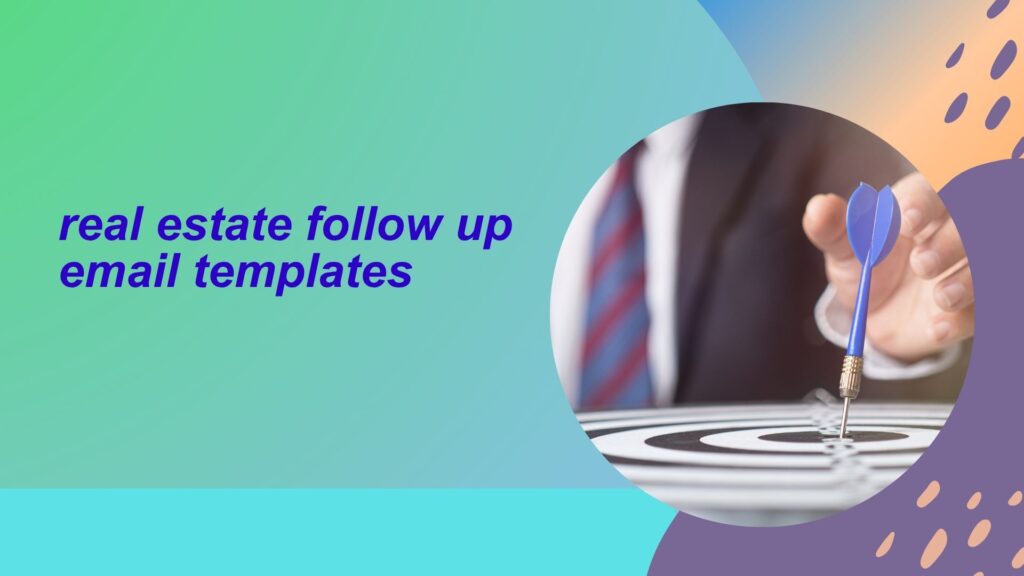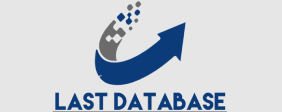Mastering Real A great real estate agent knows the power of a good follow-up. This article will help you master the art of the follow-up email. We’ll give you templates and tips. You’ll learn how to keep your clients happy. You’ll also learn how to close more deals. Furthermore, we will focus on keeping it simple. This way, everyone can understand it.
Why Follow-Up Emails Are Super Important Mastering Real
Think about how many people look for homes. Many are just Browse. Some are serious buyers. You meet many people. It’s hard to remember everyone. This is where follow-up emails come in. Firstly, they help you stay in touch. Secondly, they remind people about you. Moreover, they show you care. A good email can turn a maybe into a yes. It helps you build trust. Trust is key in real estate. People want to work with someone they trust. Therefore, never underestimate a simple email. It can make a big difference.
The Power of Staying Connect
Imagine you show a house. The client lik it. But they didn’t buy it yet. What do you do next? You send a follow-up email. This email can ask about their thoughts. It can offer more options. Also, it can simply say thank you. This simple act keeps the door open. Furthermore, it shows you are still there for them. This keeps you in their mind. Staying connect leads to more sales. Moreover, it builds a good reputation. Good reputations bring more clients.
Building Trust, One Email at a Time
Trust is like a bridge. Each email is a brick in that bridge. When you send helpful emails, trust grows. Don’t just send emails to sell. Send emails to help. Share useful information. Offer advice. Answer their questions. This shows you are an expert. It also shows you care. As a result, clients will feel more comfortable. They will trust your advice. Ultimately, this leads to successful deals. Remember, trust is earn.
Setting Up for Success: Before You Hit Send
Before you write any email, you ne a plan. Who are you sending it to? What do you want them to do? These questions are important. Firstly, know your audience. Are they a first-time buyer? Are they selling a luxury home? Their nes are different. Secondly, know your goal. Do you want them to call you? Do you want them to see another house? Thirdly, keep it short and clear. People are busy. They won’t read long emails. Finally, make it personal. Use their name. Refer to your last chat. This makes it special.
Understanding Your Audience
Every client is unique. A young couple buying their first home has different nes. An investor looking for a rental property also has different nes. You must tailor your emails. Think about their situation. What are their worries? What are their hopes? For example, first-time buyers might ne guidance on loans. Investors might ne market data. Knowing your audience helps you send the right message. It makes your email more effective. So, take time to understand them.
Defining Your Email Goal
Why are you sending this email? ? Every email should have one clear goal. Don’t try to do too much. A clear goal helps you write better. It helps the reader understand. For instance, if your goal is a call, say “Call me to discuss.” If it’s to share listings, say “Here are some new homes.” A clear goal makes your email powerful. Consequently, it gets results.
Essential Follow-Up Email Templates: Ready to Use
Now, let’s look at some templates. These are just starting points. You can change them. Make them sound like you. Remember, personalize each one.
Template 1: After an Open House
Subject: Great to meet you at [Property Address]!
Hi [Client Name],
It was a pleasure meeting you today. I hope you enjoy the open house at [Property Address]. I remember you were interest in [specific feature, e.g., the large backyard].
Do you have any questions about the property? I’m here to help.
Also, I have a few other homes that might fit what you’re looking for. Would you like to see them?
Let me know if you’re free for a quick chat next week.
Template 2: After a Showing
Subject: Following up on [Property Address]
Hi [Client Name],
Thank you for taking the time to view [Property Address] yesterday. I hope it met your expectations.
What were your thoughts on the home? I’m curious to hear your feback.
I also remember you mention [specific ne, e.g., wanting a third broom]. I can look for similar properties.
Please feel free to ask any questions. I’m always happy to help.
Template 3: Checking In (No Recent Contact)
Subject: Thinking of you, [Client Name]
Hi [Client Name],
I hope this email finds you well. It’s been a little while since we last spoke.
I was thinking of you and want to see how your home search is going. The market is always changing.
Are you still looking for a home in [specific area]? Or have your nes chang?
Please let me know if there’s anything I can assist you with. I’m here to help.
Best regards,
[Your Name]
[Your Contact Info]
Template 4: New Listing Alert
Subject: New Listing Alert: [Property Address] – Just for you!
Hi [Client Name],
I remember you were looking for [specific type of home/feature]. I found a new listing that just came on the market today.
It’s locat at [Property Address]. It has [mention 1-2 key features]. I think it might be a great fit.
You can see more details here: [Link to Listing].
Would you like to schule a viewing? Or do you have any questions about it?
Warmly,
[Your Name]
[Your Contact Info]
Template 5: Asking for a Referral
Subject: A quick request from [Your Name]
Hi [Client Name],
I hope you’re doing great in your new home at [Property Address]! I truly enjoy working with you.
As a real estate agent, referrals are very important to me. They help my business grow.
If you know anyone looking to buy or sell a home, I’d be grateful if you’d share my contact information.
Thank you so much for your trust and support.
Best,
[Your Name]
[Your Contact Info]
Tips for Crafting Amazing Follow-Up Emails
Writing an email is more than just words. It’s about feeling. It’s about connection.
Personalize, Personalize, Personalize
Always use their name. Always refer to something specific. Did you talk about their dog? Mention it. Did they like a certain type of kitchen? Bring it up. Generic emails get delet. Personal emails get read. Therefore, take notes during meetings. Remember small details. This makes a big difference. Moreover, it shows you care. Caring builds trust. Trust leads to business.
Keep It Short and Sweet
People are busy. Their inboxes are full. Get to the point quickly. A few short paragraphs are best. Each paragraph should have one main idea. Long emails feel like work. Short emails are easy to read. Furthermore, a clear call to action is crucial. Tell them exactly what to do. Do you want them to reply? Do you want them to call? Be specific.
Clear Call to Action
What do you want the reader to do next? Make it very clear. Don’t make them guess. Do you want them to reply? Say “Reply to this email.” Do you want them to call? Say “Call me at [your phone number].” A clear call to action guides them. It helps them take the next step. Therefore, always end with a clear action.
Proofread Before Sending
Typos look bad. They make you seem careless. Always read your email before sending it. Check for spelling mistakes. Check for grammar errors. Ask a friend to read it if you can. A clean email looks professional. It shows you pay attention to detail. This builds confidence in your abilities. So, always double-check.
When to Send Your Follow-Up Emails
Timing is everything. Send too soon, and you might seem pushy. Send too late, and they might forget you.
The Golden Rule of Timing
Generally, within 24 hours of contact is best. For example, after an open house, send an email that day. After a showing, send it that evening. This keeps you fresh in their mind. However, don’t bombard them. Space out your emails. Once a week is usually good for checking in. Too many emails can annoy people. Find a good balance.
Setting Up a Follow-Up Schule
Have a plan. When will you db to data the first email? When will you send the second? Use a calendar or a CRM system. A CRM helps you track clients. It reminds you when to follow up. For example, you might send an email after a showing. Then, a week later, send another. Then, two weeks later, send a market update. A schule keeps you organiz. It ensures no one falls through the cracks.

Image Ideas for Your Article
Here are two unique image ideas that you can have creat for your article.
Image 1: The “Connect World” Email
- Description: A styliz, minimalist image. In the center, a simple, open email icon. Around it, gentle, glowing lines connect to various small, abstract representations of real estate elements: a tiny house outline, a key, a handshake symbol, and a small calendar icon. The background is a soft, professional gradient, perhaps light blue to soft green.
- Why it’s unique: It visually represents the “connection” aspect of follow-up emails in real estate without being a literal screenshot or generic stock photo of a laptop. It’s conceptual and clean.
Image 2: “The Journey of Trust” Bridg
- escription: A simple, illustrative image showing a bridge being built. Instead of traditional bricks, the bridge segments are subtle, glowing email icons or small envelopes. On one side of the bridge, a simple stick figure representing a real estate agent is placing an “email brick.” On the other side, another stick figure, representing a client, is looking towards the complet part of the bridge, with a faint, positive aura around them. The background could be a subtle, blurr city skyline or a green landscape.
- Why it’s unique: This visual metaphor directly ties emails to “building trust” and a “journey,” which are key themes in the article. It’s original and easy to understand.
Measuring Your Success: Are Your Emails Working?
How do you know if your emails are good? You check the results. Are people opening them? Are they replying?
Open Rates and Click-Through Rates
Many email tools show you numbers. The “open rate” tells you how many people open your email. A good open rate means your subject line is interesting. The “click-through rate” tells you how many click a link in your email. A good click-through rate means your content is engaging. If these numbers are low, change your emails. Try different subject lines. Change your content. Learn from your data.
Feback and Replies
Are people replying
they calling you? These are good signs. It means your emails are working. They are starting conversations. Also, ask clients for feback. “Did this email help you?” Their answers can guide you. This helps you get better. Always be ready to learn.
Avoiding Common Follow-Up Mistakes
Even with good intentions, mistakes happen. Knowing them helps you avoid them.
Being Too Salesy
No one likes to feel pressur. Your emails should offer help, not just sell. Don’t always push for a sale. Provide value first. Share useful information. Answer their questions. Build the relationship. The sale will come naturally. Be a guide, not a salesperson.
Forgetting to Personalize
As we said, this is a big one. Sending australia email list emails is a waste of time. It makes clients feel like a number. They will ignore you. Always add a personal touch. This shows you care. It makes your email stand out.
Giving Up Too Soon
Sometimes, people don’t reply junior lisa kookeshbooth and sophomore away. This doesn’t mean they’re not interest. They might be busy. They might ne more time. Keep following up, but not too often. Be persistent, but polite. A few well-tim emails are better than one quick one. Don’t give up on good leads.

